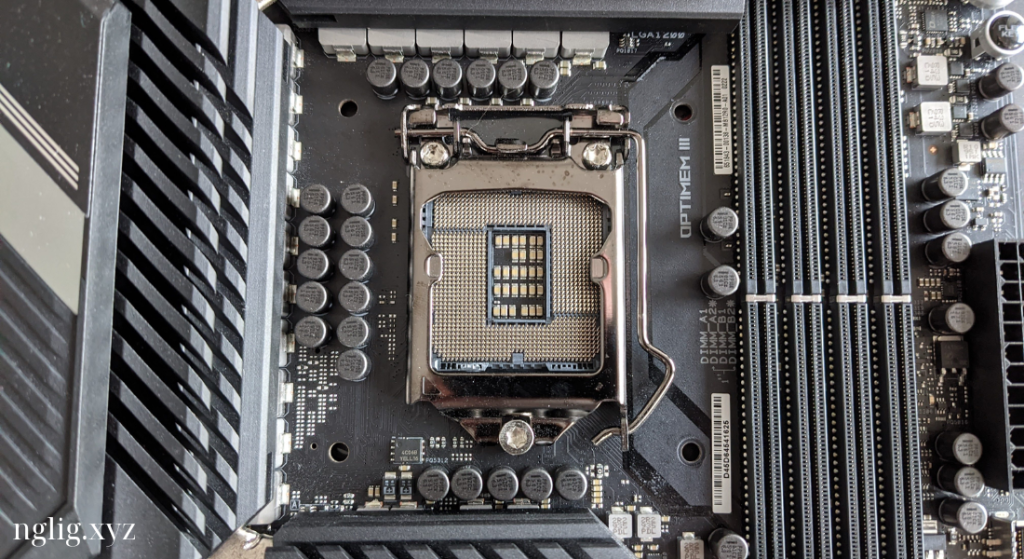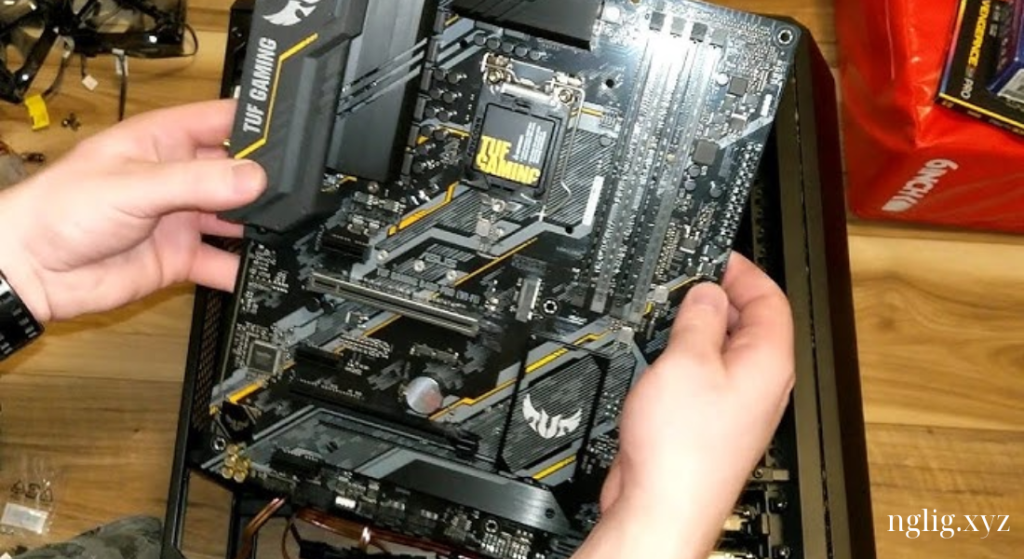Building a PC requires careful planning, and one of the most critical decisions you’ll make is choosing the right motherboard. When selecting an Intel motherboard, compatibility is essential to ensure all components work together smoothly. From processors and RAM to expansion cards and storage options, an Intel-compatible motherboard can make a significant difference in performance, upgradability, and longevity of your PC.
In this article, we’ll guide you through Intel motherboard compatibility essentials, focusing on the key factors you should consider to achieve optimal system performance.
What to Know About Intel Motherboard Compatibility
Intel motherboards are designed to work with specific Intel processors and hardware configurations. To ensure compatibility, consider the following main components:
- Processor Socket and Chipset Compatibility
- Memory Type and Speed
- PCIe Slot Availability
- Storage Options and Connectivity
- Power Requirements and Form Factor
- BIOS and UEFI Compatibility
Each of these factors influences how well your system performs and how much flexibility it will offer for future upgrades. Let’s look at each one in more detail.
Processor Socket and Chipset Compatibility
The first thing to consider is the processor socket, which must match the CPU you plan to use. Intel motherboards are developed with specific sockets that support specific CPU generations and models.
Popular Intel CPU Sockets and Compatible Processors:
- LGA 1200: Supports Intel’s 10th and 11th Generation Core processors, such as i3, i5, i7, and i9.
- LGA 1700: Designed for 12th Gen Alder Lake and compatible with the latest 13th Gen Raptor Lake processors.
When choosing an Intel CPU, check the socket type required and ensure that your motherboard’s socket matches it.
Chipset Compatibility
Intel motherboards come in various chipset options that add certain features and determine your system’s upgradability:
- Z-Series (e.g., Z690, Z590): Supports CPU overclocking and higher RAM speeds, ideal for gamers and power users.
- B-Series (e.g., B660, B560): Offers solid performance and is compatible with most Intel CPUs, though it has limited overclocking potential.
- H-Series (e.g., H610): Basic option suitable for general users, with limited connectivity and expansion options.
The chipset you choose affects the available features, so consider your system’s needs. If you plan to overclock your CPU, a Z-series chipset is essential, as other chipsets lack overclocking support.
Memory Compatibility for Speed and Stability
RAM compatibility is critical in determining your system’s speed and efficiency. Intel motherboards support different memory types and speeds based on their design and chipset.
Memory Types:
- DDR4: Supported by most Intel motherboards designed for 10th and 11th Gen processors.
- DDR5: Available with the latest Intel 12th and 13th Gen processors and compatible motherboards (LGA 1700 with a Z690 chipset).
Tips for Memory Compatibility
- RAM Speed: Check the maximum RAM speed supported by your motherboard and CPU. For instance, Intel motherboards with a Z690 chipset can support higher DDR5 speeds.
- Capacity: Most Intel motherboards support up to 128GB of RAM, but it varies based on chipset and form factor.
- Dual-Channel vs. Quad-Channel: Dual-channel configurations are common, but some Intel motherboards support quad-channel, enhancing performance in tasks like gaming and video editing.
PCIe Slots and Expansion Card Compatibility
Intel motherboards are equipped with PCIe slots for graphics cards, network adapters, sound cards, and more. Ensuring your motherboard has the right type and number of slots for your needs is essential for optimal expandability.
Key Types of PCIe Slots:
- PCIe x16: Primary slot for graphics cards, supporting high bandwidth.
- PCIe x1: Used for additional components like network cards and sound cards.
- PCIe 4.0 and PCIe 5.0: Intel’s latest chipsets (e.g., Z690) support PCIe 5.0, while others support PCIe 4.0, with older chipsets typically supporting PCIe 3.0.
The generation of PCIe is essential, especially if you plan on using high-performance GPUs or storage. PCIe 5.0 offers double the bandwidth of PCIe 4.0, which can be a future-proof option for users who want the highest performance.
Considerations for Expansion Slot Compatibility
- Graphics Card Compatibility: High-end GPUs require PCIe 4.0 or 5.0 slots, especially for intense applications like gaming and 3D rendering.
- Multiple GPU Support: Some Intel motherboards support multi-GPU setups, but this is primarily found in Z-series boards.
- Future Expansion: If you anticipate adding more expansion cards, choose a motherboard with additional PCIe slots.

Storage Options and Connectivity
Storage compatibility is crucial for both performance and data management. Intel motherboards offer several storage options, including SATA ports, M.2 slots, and in some cases, U.2 connectors.
Storage Interfaces on Intel Motherboards:
- SATA Ports: Support standard SSDs and HDDs, typically limited to around 6 Gbps.
- M.2 Slots: Allow NVMe SSDs, which provide much faster data transfer speeds by utilizing PCIe lanes.
- U.2 Connectors: Found on some high-end motherboards, commonly used in enterprise environments for high-performance storage.
Storage Compatibility Tips
- NVMe Support: Look for Intel motherboards with M.2 slots that support NVMe for faster boot times and application load speeds.
- RAID Options: If you want redundancy or faster data access, some motherboards support RAID configurations with multiple storage devices.
- SATA Port Limitations: Some boards may disable SATA ports when M.2 slots are occupied, so check the motherboard’s specifications.
Power Requirements and Form Factor Considerations
The power connectors and form factor of an Intel motherboard affect compatibility with your PC case and power supply unit (PSU). The form factor determines the size and expansion potential, with the most common being ATX, Micro-ATX, and Mini-ITX.
Popular Form Factors:
- ATX: Standard size with ample room for expansion and multiple PCIe slots.
- Micro-ATX (mATX): Compact form factor, offering fewer PCIe slots but suitable for most builds.
- Mini-ITX: Ultra-compact, often used for small builds with limited expansion slots.
Key Power and Form Factor Compatibility Tips
- PSU Compatibility: Ensure your PSU provides the necessary power connectors (24-pin ATX and additional CPU power connectors) for your chosen motherboard.
- Case Compatibility: Verify that the case supports the form factor of your motherboard and provides adequate airflow.
- Expansion Limitations: Smaller form factors may lack the space for extra components, so plan based on your needs.
BIOS and UEFI Compatibility for Stability and Upgradability
BIOS compatibility is essential, especially when pairing new processors with older motherboards. Most Intel motherboards come with UEFI BIOS, providing a user-friendly interface and advanced features.
BIOS Update Considerations:
- Compatibility with New CPUs: Ensure the motherboard’s BIOS supports your chosen CPU, as BIOS updates may be required for newer processors.
- Firmware Features: UEFI BIOS offers advanced settings, including overclocking adjustments, memory tuning, and fan control.
- Long-Term Support: Motherboards with regular BIOS updates are beneficial for future-proofing your system and maintaining compatibility with newer components.
Final Tips for Selecting an Intel-Compatible Motherboard
Choosing an Intel motherboard involves a balance between current needs and future flexibility. Here are a few final tips to ensure your motherboard will meet your requirements:
- Plan for Future Upgrades: Select a motherboard that accommodates future upgrades in areas like RAM, storage, and PCIe expansion.
- Check for BIOS Features: If you plan on overclocking, a motherboard with UEFI BIOS and easy update features will enhance the user experience.
- Assess I/O Requirements: Consider your connectivity needs, including USB ports, Ethernet, and audio outputs, as these vary by motherboard.
Conclusion
Intel motherboard compatibility is foundational to building a reliable, high-performing system. By understanding factors like CPU socket type, chipset, RAM, PCIe slots, and storage options, you can ensure compatibility between your components and achieve the best possible performance. Whether you’re building a gaming PC, workstation, or general-purpose computer, choosing the right Intel motherboard is the first step in creating a system that meets your needs and can handle future upgrades with ease.
With careful planning and the right compatibility choices, you can build an Intel-powered PC that delivers powerful, efficient performance for years to come.

